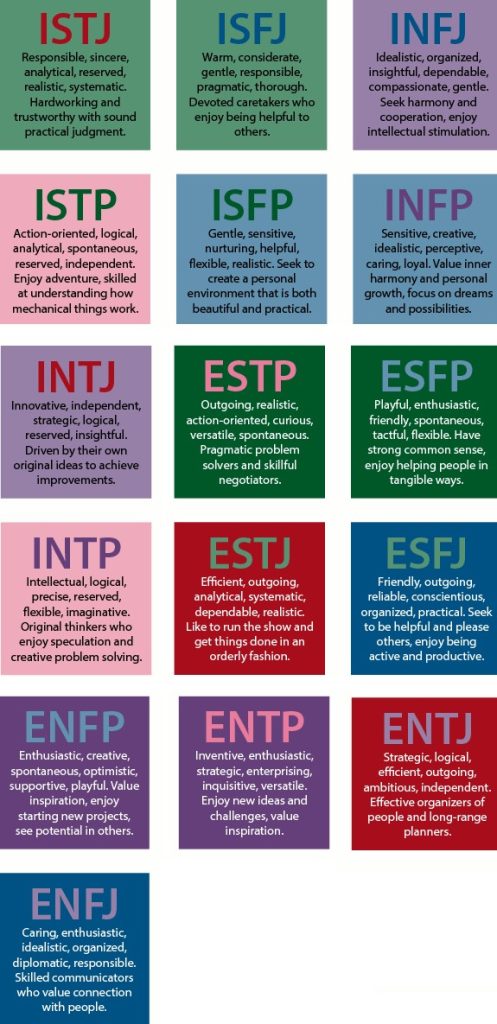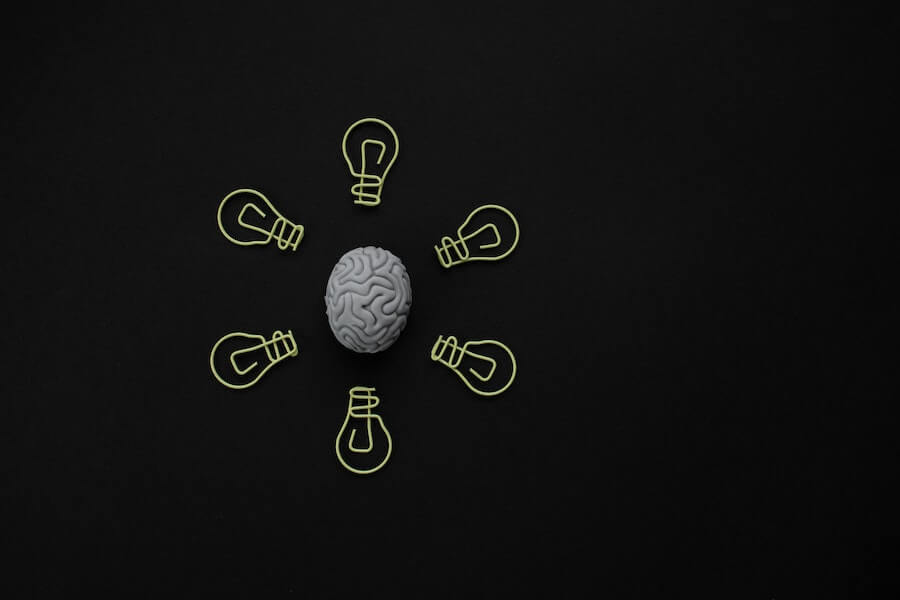Have you ever wondered why you behave the way you do or struggled to explain your inherent traits to others? It’s time to learn about MBTI compatability…
Understanding your personality type can shed light on your unique characteristics and help you navigate various aspects of your life. The Myers Briggs Type Indicator (MBTI) is a popular personality assessment tool. It has been used for decades to help people understand themselves and those around them. In this article, we’ll delve into the fascinating world of the MBTI and explore its core benefits.
We will learn its purpose and why it is an enjoyable and easy-to-use tool for discovering personality types. Also, we will look at the different Myers Briggs personality types and assess the compatibility between them. Finally, we will explore how they can be applied in both personal and professional scenarios.
Understanding your personality type can shed light on your unique characteristics and help you navigate various aspects of your life. The Myers Briggs Type Indicator (MBTI) is a popular personality assessment tool. It has been used for decades to help people understand themselves and those around them. In this article, we’ll delve into the fascinating world of the MBTI and explore its core benefits. We will learn its purpose and why it is an enjoyable and easy-to-use tool for discovering personality types. Also, we will look at the different Myers Briggs personality types and assess the personality compatibility between them. Finally, we will explore how they can be applied in both personal and professional scenarios.
What Is The Myers Briggs Type Indicator? (MBTI)
The Myers Briggs Type Indicator (MBTI) is a personality assessment tool. It tells you how your brain works and how you make decisions. Katherine Cook Briggs and her daughter Isabel Briggs Myers developed this test during World War II, based on the theories of Swiss psychiatrist Carl Jung.
The MBTI only includes statements that you agree or disagree with and categorises people into one of 16 personality types. The test is based on four dichotomies:
- Extraversion (E) vs Introversion (I)
- Sensing (S) vs Intuition (N)
- Thinking (T) vs Feeling (F)
- Judging (J) vs Perceiving (P)
The MBTI uses your responses to these dichotomies to determine your personality type. For example, if you prefer extraversion over introversion, you are classified as an “E”. On the other hand, if you favour intuition over sensing, you are categorised as an “N”. These preferences combined will assign you a four-letter personality type, such as ENFJ or ISTP.
The MBTI is used to gain insight into your personality and how you interact with the world around you. For example, if you are an ENFJ, you are likely to be empathetic, sociable, and enthusiastic. On the other hand, if you are an ISTP, you are likely to be practical, logical, and independent.
One example of how the MBTI can be used is in career development. By understanding your personality type, you can identify careers that align with your strengths and preferences. For example, an ENFJ may do well in counselling, teaching, or social work. On the other hand, an ISTP may find success in technology, mechanics, or athletics.
To learn more about the fascinating world of Myers-Briggs personality types, explore our online psychology courses.
Myers Briggs Types List
The Myers Briggs Type Indicator (MBTI) measures personality based on four dichotomies that help categorise individuals into 16 different personality types. Understanding your personality type can help you identify your strengths, weaknesses, and natural tendencies. Here’s a breakdown of the four dichotomies and the 16 MBTI personality types:
The Myers Briggs Type Indicator (MBTI) measures personality based on four dichotomies that help categorise individuals into 16 different personality types. Understanding your personality type can help you identify your strengths, weaknesses, and natural tendencies. Here’s a breakdown of the four dichotomies and the 16 MBTI personality types:
The Four Dichotomies
The four dichotomies used in MBTI to define personality are as follows:
- Extraversion (E) or Introversion (I)
- Sensing (S) or Intuition (N)
- Thinking (T) or Feeling (F)
- Judging (J) or Perceiving (P)
1) Are you outwardly or inwardly focused? If you:
| Then you prefer (E) Extraversion | Then you prefer (I) introversion | |
|---|---|---|
| Preferences | Could be described as talkative and outgoing Likes to be in a fast-paced environment Tends to work out ideas with others Thinks out loud Enjoys being the center of attention |
Could be described as reserved and private Prefers a slower pace with time for contemplation Tends to think things through inside your head Would rather observe than be the center of attention |
2) How do you prefer to take in information? If you:
| Then you prefer (S) Sensing | Then you prefer (N) Intuition | |
|---|---|---|
| Preferences | Focuses on the reality of how things are Pays attention and prefers to concentrate on facts and details Prefers ideas that have practical applications Likes to describe things in a specific and literal way |
Imagines the possibilities of how things could be Notices the big picture, sees how everything connects Enjoys ideas and concepts for their own sake Likes to describe things in a figurative, poetic way |
3) How do you prefer to make decisions? If you:
| Then you prefer (T) Thinking | Then you prefer (F) Feeling | |
|---|---|---|
| Preferences | Makes decisions in an impersonal way, using logical reasoning Values justice Enjoys finding the flaws in an argument Could be described as reasonable, level-headed |
Bases decisions on personal values and how actions affect others Values harmony and forgiveness Likes to please others and point out the best in people Could be described as warm and empathetic |
4) How do you prefer to live your outer life? If you:
| Then you prefer (J) Judging | Then you prefer (P) Perceiving | |
|---|---|---|
| Preferences | Prefers to have matters settled Thinks rules and deadlines should be respected Prefers to have detailed, step by step instructions Makes plans, wants to know what they’re getting into |
Prefers to leave options open Sees rules and deadlines as flexible Likes to improvise as they go Is spontaneous, enjoys surprises and new situations |
16 Myers Briggs Personality Types
The four dichotomies combine to create 16 different personality types, each with its own unique strengths and weaknesses. The MBTI personality types are:
- ISTJ: The Inspector
- ISFJ: The Protector
- INFJ: The Counsellor
- INTJ: The Mastermind
- ISTP: The Craftsman
- ISFP: The Composer
- INFP: The Healer
- INTP: The Architect
- ESTP: The Dynamo
- ESFP: The Performer
- ENFP: The Champion
- ENTP: The Visionary
- ESTJ: The Supervisor
- ESFJ: The Provider
- ENFJ: The Teacher
- ENTJ: The Commander

Each personality type has its unique set of strengths and weaknesses. For example, ISTJs are known for their reliability and practicality, while ENFPs are known for their creativity and enthusiasm. Understanding your MBTI personality type can help you make better decisions, find compatible work environments, and better communicate with others.
MBTI Compatibility: Matching Personalities
Understanding your personality type according to the MBTI can be useful in determining your Myers Briggs compatibility with others, particularly in romantic relationships. Personality type compatibility is not a determinant of relationship success or failure. However, it can help to identify potential areas of disagreement and provide greater insight into your partner’s individual characteristics. This can lead to a greater appreciation of your partner. Here are some essential things to know about the personality type compatibility chart based on the MBTI:
- Individuals who share similar MBTI types may have an easier time understanding and communicating with each other.
- Opposite MBTI types may be attracted to each other, but they may struggle with communication and understanding due to their different perspectives.
- Complementary MBTI types can balance each other out and bring different strengths to a relationship.
MBTI Compatibility Chart
The following chart outlines Myers Briggs compatibility between the 16 MBTI types, based on research and common observations. Keep in mind that this 16 personalities compatibility chart is a general guide and should not be taken as definitive or prescriptive.
Introvert Compatibility
| Type | Compatible Types | Less Compatible Types |
|---|---|---|
| ISTJ | ISFJ, ISTJ, ESTJ, ESTP | ENFP, ENTP, INFJ, INFP, ENFJ, ENTJ, INTP, ISFP |
| ISFJ | ISTJ, ISFJ, ESFJ, ESTJ | ENFP, ENTP, INFJ, INFP, ENFJ, ENTJ, INTP, ISFP |
| INFJ | INFJ, INFP, ENFJ, ENFP | ISTP, ESTP, ESFP, ENTP, INTP, ISTJ, ESTJ |
| INFP | INFJ, INFP, ENFJ, ENFP | ISTP, ESTP, ESFP, ENTP, INTP, ISTJ, ESTJ |
| INTJ | INTJ, INTP, ENTJ, ENTP | ESFP, ISFP, ESTP, ISTP, ENFJ, INFP, ESFJ, ISFJ |
| INTP | INTJ, INTP, ENTJ, ENTP | ESFP, ISFP, ESTP, ISTP, ENFJ, INFP, ESFJ, ISFJ |
| ISTP | ISTP, ISFP, ESTP, ESFP | INFJ, ENFJ, ENFP, INFP, INTJ, ENTJ, ESFJ, ISFJ |
| ISTP | ISTP, ISFP, ESTP, ESFP | INFJ, ENFJ, ENFP, INFP, INTJ, ENTJ, ESFJ, ISFJ |
Extrovert Compatibility
| Type | Compatible Types | Less Compatible Types |
|---|---|---|
| ISTJ | ISFJ, ISTJ, ESTJ, ESTP | ENFP, ENTP, INFJ, INFP, ENFJ, ENTJ, INTP, ISFP |
| ISFJ | ISTJ, ISFJ, ESFJ, ESTJ | ENFP, ENTP, INFJ, INFP, ENFJ, ENTJ, INTP, ISFP |
| INFJ | INFJ, INFP, ENFJ, ENFP | ISTP, ESTP, ESFP, ENTP, INTP, ISTJ, ESTJ |
| INFP | INFJ, INFP, ENFJ, ENFP | ISTP, ESTP, ESFP, ENTP, INTP, ISTJ, ESTJ |
| INTJ | INTJ, INTP, ENTJ, ENTP | ESFP, ISFP, ESTP, ISTP, ENFJ, INFP, ESFJ, ISFJ |
| INTP | INTJ, INTP, ENTJ, ENTP | ESFP, ISFP, ESTP, ISTP, ENFJ, INFP, ESFJ, ISFJ |
| ISTP | ISTP, ISFP, ESTP, ESFP | INFJ, ENFJ, ENFP, INFP, INTJ, ENTJ, ESFJ, ISFJ |
| ISFP | ISTP, ISFP, ESTP, ESFP | INFJ, ENFJ, ENFP, INFP, INTJ, ENTJ, ESFJ, ISFJ |
Benefits Of MBTI
The Myers-Briggs Type Index (MBTI) offers many benefits in different areas of life, including how they interact to understand others. This information can be used to improve teamwork, leadership skills and overall job satisfaction.
• Teacher/Student Benefits: Using MBTI in the classroom helps students understand their own learning styles, improve their study habits, and collaborate better with other students. Teachers can also use their MBTI to improve their teaching style and gain a better understanding of student needs.
• Benefits for Adolescents/Young People: The MBTI is specifically beneficial for young adults who are exploring their identity and making vital selections about their future. Understanding your persona can assist you in picking a profession that fits your strengths and preferences.
• Benefits in Future Career Decisions: The MBTI gives treasured perception into an individual’s special strengths and areas for enhancement to help in selections involving their future professional path.
• Benefits of Behavioural Insights: MBTI helps folks attain perception into their personal conduct and the conduct of others. This can lead to higher empathy and understanding, which can enhance relationships.
• Teamwork And Understanding Benefits: MBTI helps an individual understand the preferences and working styles of her members on a team, which can improve communication, collaboration and overall team performance. This can be beneficial for team leaders and managing a team.
Overall, the MBTI is a versatile tool that can be used in a variety of situations to improve personal and professional relationships, communication, and self-esteem.
Criticisms Of MBTI
The Myers Briggs Type Indicator (MBTI) is not without its criticisms. While the check is broadly used and popular, some psychologists and researchers have criticised its validity and reliability.
One of the principal criticisms of the MBTI is the lack of scientific proof to help its validity. Critics argue that the test lacks a strong theoretical basis and that its reliability is questionable.
Another criticism of the MBTI is its vulnerable validity. Some researchers have proven that people’s MBTI sorts can trade over time or differ depending on the situation. This has led some researchers to query whether or not the take a look at in reality measures what it claims to measure or whether or not it absolutely categorises human beings into arbitrary groups.
Bias and faking responses are additionally viable issues with the MBTI. Critics argue that the take a look at can be biased in opposition to certain groups, such as introverts, or that humans may additionally be inclined to supply solutions that they assume will make them show up extra favourable.
The low reliability of the MBTI is another issue. Critics argue that the test is now not consistent, and that people can get one of a kind effects on extraordinary occasions. This can make it challenging to use the check for any realistic purposes, such as professional counselling or crew building.
Finally, the MBTI has been criticised for being indistinct and incomprehensive. The test solely covers a variety of character traits and does not supply an entire image of an individual’s personality. This can lead to misunderstandings and inaccurate assessments of a person’s strengths and weaknesses.
Overall, whilst the MBTI has its advantages and can be a beneficial device in some contexts, it is necessary to method it with a critical eye and focus on its limitations.
MBTI vs Other Tests: What Sets Them Apart?

Other personality tests exist in addition to the Myers-Briggs Type Indicator (MBTI). Each test has its own distinct method of evaluating personality traits. Some of the most well-known tests include the Enneagram, the Five Love Languages, the Big Five Personality Assessment, the Workplace DISC Test, and Cattell’s 16 Personality Factor Questionnaire.
The MBTI differs from other personality tests. It is based on Carl Jung’s theory of psychological types which looks at how people perceive and process information. In contrast, many other tests, such as the Big Five Personality Assessment, measure particular traits.
Is the Myers Briggs Test Valid?
The validity of the MBTI is a concern of ongoing debate amongst psychologists and researchers. While some researchers have determined proof to help the validity of the test, others have questioned its reliability and validity.
Myers Briggs Personality Types FAQs
What is the most popular MBTI type?
The most popular Myers Briggs personality types vary depending on the specific context and population being considered. However, statistically, the most commonly reported MBTI type is ISFJ (Introverted, Sensing, Feeling, Judging) in many studies and surveys.
What is the most logical personality type?
The most logical personality type is often associated with the Thinking (T) preference in the Myers-Briggs Type Indicator. The Myers Briggs personality types that prioritise logical analysis and decision-making are the ones with the “T” preference, such as the INTJ (Introverted, Intuitive, Thinking, Judging) and the INTP (Introverted, Intuitive, Thinking, Perceiving).
Can Myers Briggs personality types change?
While your core personality type remains relatively stable throughout your life, it is believed that some aspects of your personality can change over time due to personal growth, experiences, and environmental factors. However, the fundamental preferences and tendencies associated with your Myers-Briggs personality type are generally considered to be consistent.
What is the best personality type?
There is no definitive “best” personality type. Each personality type has its own strengths, weaknesses, and unique qualities. The concept of the Myers-Briggs Type Indicator is to understand and appreciate the individual differences and preferences in people rather than ranking them as better or worse. The best personality type for an individual depends on various factors, including personal goals, interests, and the specific context or situation they find themselves in.








